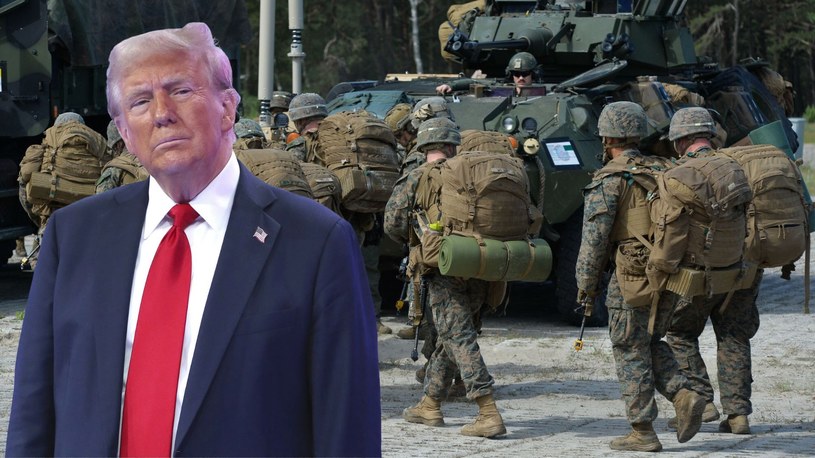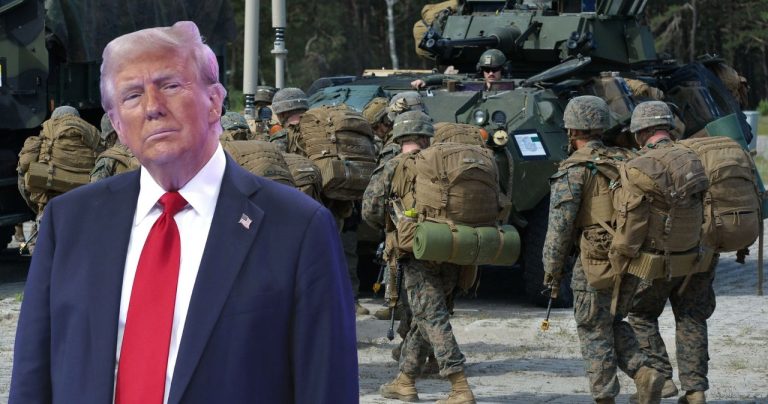
All the new and old presidents need to do is withdraw U.S. troops from Europe. He tried to do this once before, at the end of his first term, but the process was halted and canceled during Joe Biden's term.
The second option is decision-making paralysis in the North Atlantic Alliance. NATO is based on a collective decision-making mechanism, and member states cannot lose a vote.
US and NATO. Can Europe cope alone?
If the United States does not want to do something, it is the will of their leaders, but they will not do it. And the possibility of influencing the sole superpower behind the scenes is quite limited. Yes, the military security of Western societies is highly dependent on the whims of American leaders.
It doesn't have to mean drama. In this article, I would like to focus on the independent capabilities of European NATO member states, but for the sake of order, it is worth focusing on another issue. It is not yet clear why Trump and his allies are threatening to “leave Europe.” Is it a political agenda, a plan, or just a bluff aimed at mobilizing Europeans to undertake a nominally larger and more effective effort to build deterrence?
In fact, some European countries, led by Germany, have been using the U.S. umbrella to “piggyback on the U.S. dividend” for decades without investing much in their own militaries. They may be frustrated in Washington, but that doesn't require President Trump's businesslike approach to politics. In any case, NATO Europe can afford to spend more, but only by giving up a disproportionately large portion of its citizens' social amenities.
NATO. Russia's unique civilizational weaknesses
Let's return to the issue of NATO's current military capabilities. For decades, the security of the international order has been based on the balance of nuclear power, the essence of which rests on the content of the arsenals of the United States and Russia. The resources of the remaining members of the “nuclear club'' appear to be of secondary importance.
But let's look at the details. The United States and Russia have similar numbers of warheads, about 6,000 each, of which only a quarter are in active status. The rest will be effectively scrapped. NATO's European members France and the United Kingdom have a combined inventory of more than 500,000 weapons, the overwhelming majority of which are ready for immediate use. This is significantly less than in Russia, but still enough to deal a decisive blow to the Federation. In this context, Russia's particular weaknesses are not unimportant. It is the fact that the centers of civilization are concentrated in Moscow and St. Petersburg (that is, in the European part of the country). In the event of a nuclear war, this overconcentration eliminates most of the benefits of territorial expansion.
As a conclusion to this thread, in the European-Russian perspective, as in the case of American-Russian relations, the threat of mutual destruction basically eliminates the risk of either side using the “strongest argument.” This means that potential areas of conflict will be forced to lie outside the “nuclear ring,'' so to speak. What can you see there? Europe's powerful economic power.
The conventional force parameter is positive
Considering purchasing power parity in favor of Russians, Europe's potential is five times that of Russia ($35 vs. $7 trillion). Due to the lack of political will, weapons production is still carried out at a fraction of the speed, but the efficiency of the Russian defense industry, operating in the realities of war mobilization (i.e. at maximum speed), is still exceeded. are.
Following a single area – the production of artillery ammunition. Europe is still “in the woods” here, and production is still lower than Russia. Given the amount of accumulated capital of the NATO non-American community, this situation could change quickly, and perhaps this will be the “Trump effect”. In fairness, it is worth noting that factories on the continent now produce more missiles compared to the situation before 2022. In Poland, this is an almost fourfold increase.
Conventional military power parameters point to an imbalance that favors only European NATO members. European members of the alliance have more soldiers (2 million vs. 1.5), tanks (6,000 vs. 2), infantry fighting vehicles (9,000 vs. 2), “gun barrels” (7,000 artillery systems vs. 2,7). They have 2000 planes, Russia has 1000. The cumulative defense budget of European countries from NATO is three times that of Russia, most of which was “eaten up” by wars ($380 billion vs. $126 billion in 2023). Add to this the difference in quality. In almost every category of weapons, post-Soviet Russia's equipment is inferior to Western equipment. The Ukraine war most clearly demonstrated this.
NATO. Nothing happens without efficient logistics.
Unfortunately, the good news ends here. With or without the United States, NATO's weakness remains its diversity. The alliance is made up of dozens of countries, and the division of responsibility itself is militarily problematic. This is further complicated by the fact that each country has a slightly different definition of its interests, some of which conflict with each other. Washington can “knock on the table” and issue orders to unruly allies, but no one else in the community has such authority.
Contingency plans were devised to at least partially offset the effects of limited decision-making. This is where the action is carried out “automatically” without having to be agreed again. In the event of a threat to Poland, these plans envisaged a large-scale deployment of NATO forces to the Vistula River. The problem is that most of the troops will be American, which, given Washington's eager face, will likely mean the plan will have to be rewritten. It's scary to think what would happen if Hungary or Turkey were added.
But the Americans' lack of a strong military is not the only problem, and perhaps not the most important one. No matter how well-trained and well-equipped an army is, if ammunition, fuel, food, and medical equipment are taken away in time, at best it will not win, and at worst it will fail. In other words, nothing can happen without efficient logistics.
war was an abstract concept
What did we see in Afghanistan? In 2012, many of our Rosomaks traveled with the netting that protects their armor from RPG grenades damaged. Officially, they were functional vehicles that could successfully participate in various operations during the day, as well as Rosomaks with non-functional night observation equipment. There was reason to be satisfied, as equipment efficiency is quite a feat in an army.
This feat was difficult to accomplish due to the unit's limited supplies, despite the efforts of the mechanics. There were no problems before, but I will write about the reasons for this soon, but then the parts I ordered were “sent” to Afghanistan for several months. My hair still stands on end when I think of the subunit that spent weeks with ineffective tires because it ran out of vulcanizing pegs. “The general arranged something,” one of the soldiers summed up the story.
“Trading” also includes cannibalism, that is, obtaining parts from destroyed and damaged cars. This, combined with distrust in the rapid operation of logistics services, contributed to maintaining the fiction of high efficiency. Just because some people like to report issues, they are happy to be accepted in subsequent levels. But at the end of the chain, in the offices of bureaucrats and politicians, war was an abstract concept. No one there risked their lives with defective equipment.
NATO is limping along without the United States. 4 main areas
Military logistics is divided into four areas. The first includes supplies of fuel, ammunition, parts, medicine, and food. The second is renovation equipment. The third is responsible for the living environment. The fourth issue concerns medical safety. In Afghanistan, the last two fell on the shoulders of the Americans, while the first two to a large extent depended on the Poles. Given the distance between the country and the expedition site (4,000 km) and the lack of strategic air transport, problems were inevitable. Fortunately, an American was on hand. And they could “do anything'' until they became immersed in activities related to the withdrawal of their troops.
There are no major changes as of now. 70% of the time NATO's air and sea transport capabilities are the responsibility of the Americans. No one can build a base of operations anywhere on the planet like they can. No one will provide the military with evacuation systems and medical facilities like they do. European capabilities, not just Poland's, are inadequate in this and many other fields to “handle'' anything more than “small-scale expeditionary warfare.''
As an analogy, NATO without the United States is like a modern tank. Although powerful, it does not have a commander or an engine. It can be used in combat, and in defense, if the crew cooperates, it becomes invincible. But static combat means, first of all, a huge risk of the machine being destroyed. And secondly, the cannon needs something to shoot at.
“Graffiti” Czarzasti: According to my memory, several million people belonged to the Polish United Workers' Party/Porsat News/Porsat News

